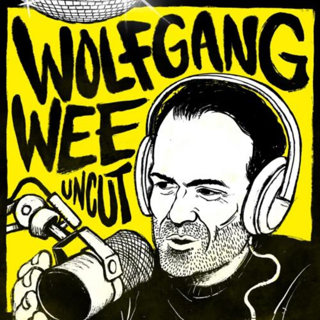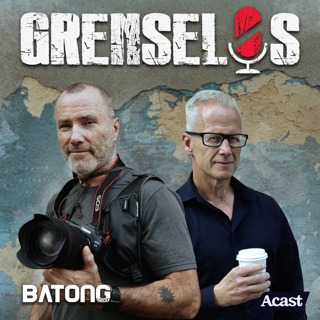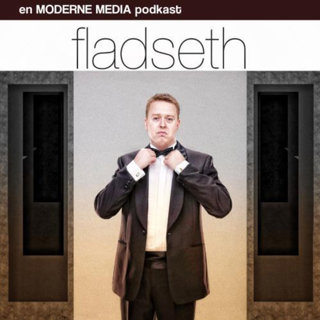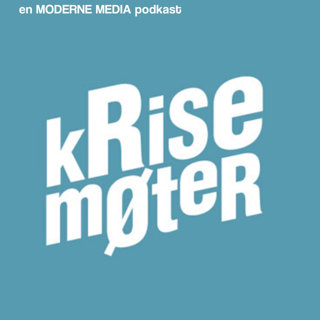
The Khmer Rouge take power in Cambodia
In April 1975 the four-year rule of the brutal Khmer Rouge began in Cambodia. Up to two million people are thought to have died - many summarily executed, or starved to death in the communist regime. In 2013, Mike Lanchin spoke to Youk Chhang, who was just 14-years-old when the Khmer Rouge swept to power. Eye-witness accounts brought to life by archive. Witness History is for those fascinated by the past. We take you to the events that have shaped our world through the eyes of the people who were there. For nine minutes every day, we take you back in time and all over the world, to examine wars, coups, scientific discoveries, cultural moments and much more. Recent episodes explore everything from football in Brazil, the history of the ‘Indian Titanic’ and the invention of air fryers, to Public Enemy’s Fight The Power, subway art and the political crisis in Georgia. We look at the lives of some of the most famous leaders, artists, scientists and personalities in history, including: visionary architect Antoni Gaudi and the design of the Sagrada Familia; Michael Jordan and his bespoke Nike trainers; Princess Diana at the Taj Mahal; and Görel Hanser, manager of legendary Swedish pop band Abba on the influence they’ve had on the music industry. You can learn all about fascinating and surprising stories, such as the time an Iraqi journalist hurled his shoes at the President of the United States in protest of America’s occupation of Iraq; the creation of the Hollywood commercial that changed advertising forever; and the ascent of the first Aboriginal MP.(Photo: The Khmer Rouge in Cambodia, Credit: PRESSENS BILD/AFP via Getty Images)
16 Apr 10min

The invention of the white LED lightbulb
In 1993, a literal lightbulb moment led to the invention of the first white light emitting diode (LED). These LEDs are now used to light up everything from our streets to our homes to this screen you’re looking at. Along with two other Japanese engineers, Professor Shuji Nakamura, was behind this illuminating invention.But Shuji’s journey to this point is one of resilience and perseverance. In his pursuit to discover the first commercial white LED, he had to overcome many obstacles along the way.With less funding than his counterparts and one of the only inventors without a PhD degree, Shuji stood out from the crowd.He set out to get his PhD degree and found one of the most sought-after inventions along the way.Professor Shuji Nakamura speaks to Natasha Fernandes about finding the light and how it might not be what you would expect.Eye-witness accounts brought to life by archive. Witness History is for those fascinated by the past. We take you to the events that have shaped our world through the eyes of the people who were there. For nine minutes every day, we take you back in time and all over the world, to examine wars, coups, scientific discoveries, cultural moments and much more. Recent episodes explore everything from football in Brazil, the history of the ‘Indian Titanic’ and the invention of air fryers, to Public Enemy’s Fight The Power, subway art and the political crisis in Georgia. We look at the lives of some of the most famous leaders, artists, scientists and personalities in history, including: visionary architect Antoni Gaudi and the design of the Sagrada Familia; Michael Jordan and his bespoke Nike trainers; Princess Diana at the Taj Mahal; and Görel Hanser, manager of legendary Swedish pop band Abba on the influence they’ve had on the music industry. You can learn all about fascinating and surprising stories, such as the time an Iraqi journalist hurled his shoes at the President of the United States in protest of America’s occupation of Iraq; the creation of the Hollywood commercial that changed advertising forever; and the ascent of the first Aboriginal MP.(Photo: Shuji Nakamura speaks during a news conference with LED lights on display. Credit: Kevork Djansezian via Getty Images)
16 Apr 10min

The Bali Nine drug smuggling case
In April 2005, nine young Australians were caught trying to smuggle 8.3kg of heroin out of Indonesia. The Bali Nine, as they became known, faced a maximum sentence of death by firing squad under Indonesia's strict drug laws. Bishop Tim Harris, who formed a close relationship with one of the Bali Nine families, and visited members of the group in prison has been speaking to Dan Hardoon.Eye-witness accounts brought to life by archive. Witness History is for those fascinated by the past. We take you to the events that have shaped our world through the eyes of the people who were there. For nine minutes every day, we take you back in time and all over the world, to examine wars, coups, scientific discoveries, cultural moments and much more. Recent episodes explore everything from football in Brazil, the history of the ‘Indian Titanic’ and the invention of air fryers, to Public Enemy’s Fight The Power, subway art and the political crisis in Georgia. We look at the lives of some of the most famous leaders, artists, scientists and personalities in history, including: visionary architect Antoni Gaudi and the design of the Sagrada Familia; Michael Jordan and his bespoke Nike trainers; Princess Diana at the Taj Mahal; and Görel Hanser, manager of legendary Swedish pop band Abba on the influence they’ve had on the music industry. You can learn all about fascinating and surprising stories, such as the time an Iraqi journalist hurled his shoes at the President of the United States in protest of America’s occupation of Iraq; the creation of the Hollywood commercial that changed advertising forever; and the ascent of the first Aboriginal MP.(Photo: Scott Rush of Brisbane and Andrew Chan of Sydney are walked into the Denpasar District Court on October 13, 2005 in Denpasar, Indonesia. Credit:(Photo by Jason Childs/Getty Images)
14 Apr 9min

Germany’s ‘Green Belt’
In December 1989, Germany’s ‘Green Belt’ was born. For more than 40 years, the country had been split by a 1,400km border and, in the decades the so-called ‘death zone’ had existed, life flourished everywhere. In 1989, communism crumbled and, as soon as the borders opened, Kai Frobel knew he needed to act fast to stop farmers and developers. He called a meeting on 9 December, hoping a few people might come along. Around 400 people from both sides of the border joined Kai to help create what would become known as Germany’s ‘Green Belt’, securing life in a place which had been associated with death for decades. Professor Kai Frobel tells Laura Jones about growing up near the fortified GDR border and why it’s such a special place for rare species of birds and animals.Eye-witness accounts brought to life by archive. Witness History is for those fascinated by the past. We take you to the events that have shaped our world through the eyes of the people who were there. For nine minutes every day, we take you back in time and all over the world, to examine wars, coups, scientific discoveries, cultural moments and much more. Recent episodes explore everything from football in Brazil, the history of the ‘Indian Titanic’ and the invention of air fryers, to Public Enemy’s Fight The Power, subway art and the political crisis in Georgia. We look at the lives of some of the most famous leaders, artists, scientists and personalities in history, including: visionary architect Antoni Gaudi and the design of the Sagrada Familia; Michael Jordan and his bespoke Nike trainers; Princess Diana at the Taj Mahal; and Görel Hanser, manager of legendary Swedish pop band Abba on the influence they’ve had on the music industry. You can learn all about fascinating and surprising stories, such as the time an Iraqi journalist hurled his shoes at the President of the United States in protest of America’s occupation of Iraq; the creation of the Hollywood commercial that changed advertising forever; and the ascent of the first Aboriginal MP.(Photo: Kai Frobel on the former border between East and West Germany. Credit: BUND Kompetenzzentrum)
11 Apr 10min

Oklahoma City bombing
On 19 April 1995, a huge truck bomb killed 168 people in a government building in Oklahoma City, US. There were 19 children among the dead and more than 500 people were injured. One of the perpetrators, Timothy McVeigh, was executed in 2001. Dr David Tuggle was a paediatric surgeon who helped find survivors. He spoke to Golnoosh Golshani in 2015.Eye-witness accounts brought to life by archive. Witness History is for those fascinated by the past. We take you to the events that have shaped our world through the eyes of the people who were there. For nine minutes every day, we take you back in time and all over the world, to examine wars, coups, scientific discoveries, cultural moments and much more. Recent episodes explore everything from football in Brazil, the history of the ‘Indian Titanic’ and the invention of air fryers, to Public Enemy’s Fight The Power, subway art and the political crisis in Georgia. We look at the lives of some of the most famous leaders, artists, scientists and personalities in history, including: visionary architect Antoni Gaudi and the design of the Sagrada Familia; Michael Jordan and his bespoke Nike trainers; Princess Diana at the Taj Mahal; and Görel Hanser, manager of legendary Swedish pop band Abba on the influence they’ve had on the music industry. You can learn all about fascinating and surprising stories, such as the time an Iraqi journalist hurled his shoes at the President of the United States in protest of America’s occupation of Iraq; the creation of the Hollywood commercial that changed advertising forever; and the ascent of the first Aboriginal MP.(Photo: Albert P. Murrah Federal Building after the bombing. Credit: Bob Daemmrich/AFP via Getty Images)
10 Apr 10min

Liberia’s women in white who helped end civil war
In December 2011, Leymah Gbowee was awarded the Nobel Peace Prize for her role in helping to end the devastating civil war in Liberia.She had mobilised thousands of women to take part in daily, non-violent public protests calling for peace – which pressurised ruthless President Charles Taylor into meeting them.When he agreed to peace talks, a delegation from The Women of Liberia Mass Action for Peace followed Taylor to Ghana. When talks stalled, they barricaded the room, refusing to let anyone leave until a peace deal was reached. Within weeks, after continued pressure from the US and other West African nations, the former warlord had resigned and gone into exile.Jacqueline Paine speaks to Leymah about her pivotal role in securing peace for Liberia.Eye-witness accounts brought to life by archive. Witness History is for those fascinated by the past. We take you to the events that have shaped our world through the eyes of the people who were there. For nine minutes every day, we take you back in time and all over the world, to examine wars, coups, scientific discoveries, cultural moments and much more. Recent episodes explore everything from football in Brazil, the history of the ‘Indian Titanic’ and the invention of air fryers, to Public Enemy’s Fight The Power, subway art and the political crisis in Georgia. We look at the lives of some of the most famous leaders, artists, scientists and personalities in history, including: visionary architect Antoni Gaudi and the design of the Sagrada Familia; Michael Jordan and his bespoke Nike trainers; Princess Diana at the Taj Mahal; and Görel Hanser, manager of legendary Swedish pop band Abba on the influence they’ve had on the music industry. You can learn all about fascinating and surprising stories, such as the time an Iraqi journalist hurled his shoes at the President of the United States in protest of America’s occupation of Iraq; the creation of the Hollywood commercial that changed advertising forever; and the ascent of the first Aboriginal MP.(Photo: Leymah Gbowee with fellow activists. Credit: Issouf Sanogo/AFP via Getty Images)
9 Apr 9min

The Reichstag fire
On 27 February 1933, the Reichstag building in Berlin, which was home to the German Parliament, was burned down. This was a key event in the establishment of the Nazi dictatorship.Berlin-born journalist, Sefton Delmer, told his story to the BBC World Service in 1967. He grew up in the city so knew people involved with the Nazi party. This meant he was able to get close to the main people on the night. Delmer walked around the burning building with Hitler and Goring. He recalls their conversations and describes the scene in this fascinating account.Produced and presented by Gill Kearsley. Eye-witness accounts brought to life by archive. Witness History is for those fascinated by the past. We take you to the events that have shaped our world through the eyes of the people who were there. For nine minutes every day, we take you back in time and all over the world, to examine wars, coups, scientific discoveries, cultural moments and much more. Recent episodes explore everything from football in Brazil, the history of the ‘Indian Titanic’ and the invention of air fryers, to Public Enemy’s Fight The Power, subway art and the political crisis in Georgia. We look at the lives of some of the most famous leaders, artists, scientists and personalities in history, including: visionary architect Antoni Gaudi and the design of the Sagrada Familia; Michael Jordan and his bespoke Nike trainers; Princess Diana at the Taj Mahal; and Görel Hanser, manager of legendary Swedish pop band Abba on the influence they’ve had on the music industry. You can learn all about fascinating and surprising stories, such as the time an Iraqi journalist hurled his shoes at the President of the United States in protest of America’s occupation of Iraq; the creation of the Hollywood commercial that changed advertising forever; and the ascent of the first Aboriginal MP.(Photo: The Reichstag fire in 1933. Credit: Universal History Archive/Universal Images Group via Getty Images)
8 Apr 10min

The UN retreat from Somalia
In 1991, a horrific civil war erupted between rival warlords in Somalia. A US-led United Nations mission tried to restore order and provide humanitarian aid. But, the mission ended in an embarrassing withdrawal in 1995 after US helicopters were shot down, as depicted in the film Black Hawk Down.Halima Ismail Ibrahim risked her life to work for the UN mission. She speaks to Ben Henderson.Eye-witness accounts brought to life by archive. Witness History is for those fascinated by the past. We take you to the events that have shaped our world through the eyes of the people who were there. For nine minutes every day, we take you back in time and all over the world, to examine wars, coups, scientific discoveries, cultural moments and much more. Recent episodes explore everything from football in Brazil, the history of the ‘Indian Titanic’ and the invention of air fryers, to Public Enemy’s Fight The Power, subway art and the political crisis in Georgia. We look at the lives of some of the most famous leaders, artists, scientists and personalities in history, including: visionary architect Antoni Gaudi and the design of the Sagrada Familia; Michael Jordan and his bespoke Nike trainers; Princess Diana at the Taj Mahal; and Görel Hanser, manager of legendary Swedish pop band Abba on the influence they’ve had on the music industry. You can learn all about fascinating and surprising stories, such as the time an Iraqi journalist hurled his shoes at the President of the United States in protest of America’s occupation of Iraq; the creation of the Hollywood commercial that changed advertising forever; and the ascent of the first Aboriginal MP.(Photo: UN soldier in Mogadishu. Credit: Thielker/ullstein bild via Getty Images)
7 Apr 10min






















